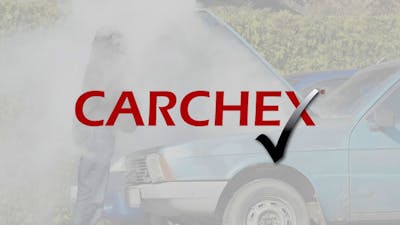Toyota Maintenance: Cost, Repairs and Schedule
Two unexpected, hidden costs of owning a vehicle are maintenance and repair. Maintenance includes pre-planned work you do here and there to keep your vehicle operating as it should. Tire rotations and tire replacements, brake fluid changes, brake pad and rotor changes, 12-V battery replacements, and air filter changes make up the bulk of maintenance costs on modern automobiles. With spark plugs lasting as many as 120,000 miles, timing belts lasting over 70,000 miles, distributor caps long gone, and no more power steering fluid to change, most cars are relatively maintenance-free compared to cars from the days of old.
Popular Warranty Providers
Repairs are a different type of work that you pay for. These are unexpected and unplanned jobs required to fix a vehicle that breaks after it is out of the warranty period. Good real-world examples of common under-the-hood repairs include alternator replacements, starter motor replacements, and AC compressor replacements. Suspension components also have their issues, and some models are much more susceptible to failure than others. Wheel bearing replacements, strut and shock replacements, and ball joint repairs are typical of the suspension repairs many cars will require.
Eventually, every part of every car will fail. In our story here, we are going to ignore the end-of-life type of failures and repairs that very old, fully-depreciated cars suffer from. Things like a complete engine failure or transmission failure can cost as much as $5,000 and are often the final straw in an older car’s long list of pricey repairs before it is retired and recycled. Our story will focus on the maintenance and repairs needed to keep a modern vehicle running up to and beyond 100,000 miles.
Toyota Cost Of Maintenance - Reliability and Warranty
Toyota has built its brand on three pillars; Quality, Durability, and Reliability, called “QDR” by the company. Toyota earned its solid reputation with great effort, but there are some downsides. Toyota vehicles are generally unchanged for more years than the models with which they compete, so at the end of their generations, Toyota vehicles may seem just a bit outdated. However, keeping the models in production for added years means that once the bugs are all worked out, those Toyota’s tend to have bullet-proof longevity and reliability.
Take a glance at the Consumer Reports’ ratings for the Prius if you want a great example of Toyota’s reliability. The Prius has an 11-year uninterrupted streak of perfect 5/5 reliability ratings. It is hard to find any other vehicle with such a record of durability excellence.
In addition to designing its vehicles to be extremely reliable, Toyota also adds to the value proposition it offers shoppers with two years or 25,000 miles of included maintenance. Toyota Care, as the program is called, covers everything needed to keep the vehicle running properly. Oil changes, tire rotations, keyfob batteries, and inspections and adjustments are all included in the price of the new vehicle. You follow the maintenance plan in the owner's manual, and when you visit the dealership, you pay nothing. Toyota even throws in 24-hour roadside assistance over the period so that owners are assured of a fixed cost of ownership.
Shoppers who are looking for a vehicle that will be reliable and have a very low cost for maintenance and repairs should put Toyota at the top of their list.
Toyota Recommended Maintenance Schedule
We have created the chart below showing the maintenance schedule for one of Toyota’s most popular vehicles, the RAV4 crossover SUV. Your local Toyota dealer or trusted shop can provide you with an estimate for the needed work before you arrive. Always keep in mind that the only scheduled maintenance needed for your Toyota is what is listed in the vehicle’s owner’s manual. Dealerships and some independent shops often add unnecessary and even unhelpful services to boost their revenue. Check out our story on “Avoiding the Fluid Flush Scam” for more on this topic.
| Maintenance Job | Every 5K Miles | Every 10K Miles | Every 36K Miles | Every 60K Miles | Every 100K Miles | Every 120K Miles |
|---|
- *Perform more frequently if vehicles used in dusty conditions, if used for towing, rideshare, or other Toyota-defined severe duty conditions.
- The 2022 RAV4 uses a timing chain, not a timing belt, so it is not an item in need of replacement.
Typical Costs For Routine Maintenance Jobs
What you pay for maintenance work depends on your specific make and model and, to a large degree, where you have it serviced. Dealers typically charge 10% to 30% more for the same service you would get at a trusted local shop. The guide below is intended to help create a budget for maintenance work commonly done on most vehicles.
| Maintenance Job | Approximate Cost Range |
|---|
What Are Wear Items and Various Inspections?
Our chart above lists “Various Inspections & Minor Adjustments” as one of the many maintenance items required to properly maintain a vehicle. These include common sense things like a visual brake inspection, hands-on suspension component checks, visual inspection of hoses and belts, checking that coolant, transmission, and differential oil levels are at the proper setpoints, and re-torquing specific bolts on the vehicle, such as those on the propeller shaft (driveshaft). Most shops will do these things for a nominal fee. However, dealerships tend to inflate the cost of these inspections and minor adjustments at the 15K intervals. Often to the tune of hundreds of dollars.
| Wear Item Service | Estimated Interval Miles | Budget Cost Range |
|---|
~ means approximately.
Consumable Parts Maintenance For All Vehicles
All vehicles have consumable parts that require maintenance and replacement at certain points in the vehicle’s lifespan. There is no set time for many of these, but rather, they are done when needed. Here is a quick rundown of some common items that you should budget for:
- Wiper Blades - Expect to replace wiper blades every 10,000 to 20,000 miles. You can do it yourself or pay the shop double the parts cost to have it done. Budget $20 to $50.
- 12-V Battery - Your car’s battery will last from three to six years on average, depending on how hot or cold your area is. Heat kills batteries, and they then pass away on a cold morning. AAA offers onsite battery replacement for most cars in most areas. Budget $200.
- Brakes - Your brakes will wear out in pairs. Front pair and rear pair. They may all coincidentally wear out at once, but that is uncommon. Budget $400 to $750 per pair. This includes rotors, pads, and minor parts, plus labor. Calipers and other brake components fail less commonly.
- Brake Fluid Changes - Most manufacturers and all shops will recommend that you change your brake fluid periodically. 30,000 miles is a typical interval. Budget about $200 for this. However, it is also often done during a brake pad and rotor replacement, so you may not need it as often as every 30,000 if you also service the brakes.
- 4-Wheel Alignment - Your suspension undergoes slight changes as your car ages. For this reason, a shop will recommend a 4-wheel alignment at certain intervals. It is also smart to do this when purchasing new tires so that the new ones will wear properly. Budget $125 for this service. It should not be needed more than every 30,000 miles unless you travel off-pavement frequently.
- Tires - Tires can wear out on their own by losing tread, being damaged, or by being too old and suffering from environmental degradation. Budget for tires on a typical mainstream vehicle every 40,000 to 50,000 miles or so, and more frequently for EVs and sporty vehicles. Your budget will depend on your vehicle, but around $1,000 is a typical cost, including the mounting, balancing, and disposal fee of your old tires. To maximize the lifespan of your tires, always keep them properly inflated and rotate them according to the manufacturer’s suggested interval.
- Belts and Hoses - The accessory belt in your engine and the hoses that carry coolant and other fluids don’t have specific replacement intervals, but they do wear. Expect to replace the belts and hoses in your vehicle at least once every 100K miles. Prices vary according to the vehicle and the needed part. Budget $300 per vehicle per 100K usage.
- Timing Belts - A very critical part of some engines is a rubber/composite engine valve timing belt. This belt typically lasts between 70K and 90K miles or about 7 to 9 years. Replacement is costly and includes a water pump change in most vehicles. Budget $750 to $1,000 for this once every 100K service. Note that many vehicles use a chain instead, so your vehicle may not have this belt. Timing chains are designed to last the life of the vehicle and save you money.
- Transmission Fluid Changes - By Car Talk’s count, there are now over five different common transmissions in use in modern vehicles. Geared, CVT, eCVT, DSG, and manual. Each has its own needs, and each manufacturer has their own schedule for service and fluid replacements. Consult your manual. Many modern vehicles have sealed transmissions meaning they do not require fluid changes. If your vehicle does require a transmission fluid change, budget $350 to $650 for this service.
Common Vehicle Repair Examples
Many components that are designed to last the life of a vehicle do not. Our chart below includes some commonly repaired and replaced parts of modern vehicles. These should only be a once-per-ownership event. If you find that your vehicle requires multiple repairs of the same type, it may be time to look for a new car.
| Common Repair Type | Approximate Cost (varies by make and model) |
|---|
How Much Does a Toyota Maintenance Plan Cost?
Prepaid maintenance plans are a great way to save a little money on the scheduled maintenance your vehicle will need. Before we go too far, let’s remember that many brands now offer included maintenance as part of the purchase price of your new vehicle for a set period of time. Typically, included maintenance lasts for the first two or three years of ownership. So, don't buy a plan you won't use if you will not keep the car for more than a few years.
Prepaid maintenance plans come in a couple of variations. Some are manufacturer-authorized plans that dealers themselves sell. Toyota’s “ToyotaCare Plus” is a good example of this. Although the dealer will sell it to you, the plan is from Toyota, and it will work at any authorized Toyota dealer you wish to visit.
Some prepaid maintenance plans are tethered to the actual dealership itself. That means if you move far from the dealer or find a new job across the street from another dealer, the plan may not be much help to you. Be certain to find out if the prepaid maintenance plan is good at any dealer from the brand you buy, and if not, don't purchase that plan.
Toyota doesn’t sell its prepaid maintenance plans directly. We were directed to the dealership network to obtain pricing. We then phoned Toyota dealers in the metro Boston area to find out how much a prepaid maintenance plan would cost for a 2022 Toyota RAV4. It took three tries before any of the dealers would put us through to anyone willing to help us live on the phone.
The third dealership offered the following two packages, both of which are called Toyota Care Plus. These packages begin when the included maintenance ends. Here are the prices we were quoted:
Package 1: * Duration - Covers years 3, 4, and 5 of the vehicle’s life and ends at 75,000 miles. (Therefore, 50,000 miles) * Price - $980
Package 2: * Duration - Covers the vehicle from 25,000 miles to 55,000 miles. (Therefore, 30,000 miles) * Price - $625
Here’s what’s included: * Engine oil and filter changes * Cabin air filter * Engine air filter * Rotate tires * Multi-point inspection * Inspect and adjust fluid levels * Genuine Toyota Parts * Toyota-trained technicians
This plan does include engine and cabin air filters. Bear in mind that you can buy those filters yourself for under $25 each and change them without tools in under two minutes.
Common Toyota Problems and Repairs
The good news for Toyota owners is that Toyota vehicles have an excellent reputation for reliability. The problems you might expect will depend on the specific year, model, and trim you own. Toyota’s from the past generation did have some oxygen sensor woes. And Toyota Highlanders have been known to suffer from frozen calipers and wheel bearing failures. Our chart above lists some example pricing for such repairs.
Is a Toyota Extended Warranty Worth It?
Extended warranties can help a vehicle owner handle unusual and unexpected repairs with high price tags. Given Toyota’s singular position as the brand with the most solid and well-deserved reputation for reliability and durability, we would suggest owners not purchase an aftermarket or Toyota-branded extended warranty.
However, we will say that Toyota’s self-branded extended warranties tend to be fair, and they are both cancelable at any time and transferable to a future owner. Just be sure what you buy is from Toyota Financial Services and that you buy it from a Toyota dealer. You need not buy a Toyota Extended Warranty the day you buy your Toyota, but to qualify, your car must be newer than the expiration of its 3-year, 36,000-mile new car warranty period.
How Much Does It Cost To Maintain A Toyota Highlander For $100,000 Miles?
Car Talk’s staff fleet includes a 2007 Toyota Highlander. This is one of the most highly-rated and popular SUVs of the modern era. We kept the repair receipts for every maintenance visit and every repair, plus all the costs associated with consumable items like wiper blades and tires. The total cost over 100,000 miles was $14,029. That cost was about 40% higher than the cost of maintaining a 2006 Honda Accord for 100,000 miles. The Highlander's cost was higher than most vehicles’ average cost primarily because it required multiple expensive brake jobs and wheel bearing repairs.
Our Recommendations
Toyota is a brand famous for reliability. Car Talk can confidently say that this is a brand we trust. If you purchase a new or used Toyota, follow the maintenance schedule closely and you will likely enjoy many years of affordable ownership. We would suggest, based on staff experience, that a trusted local shop be found for all of the vehicle’s needs once the 2-year Toyota Care included maintenance program has expired.
Our Methodology For Best Warranty Providers
Car Talk has spent the last two years diving deeply into the warranties industry for the benefit of our readership and long-time listeners. Our process for deciding on the best warranty companies is exceptionally thorough, involving in-depth research and our unique secret shopper initiative. We compiled over 50 data points across all reviewed companies to refine and inform our selection process. Car Talk reviewed the following important criteria for each company:
- Consumer Satisfaction: Cross-referencing multiple trusted resources to pull our fair and balanced customer reviews.
- Cost: Utilizing our secret shopper initiative, we got comparable quotes across all companies so we can validly compare pricing.
- Coverage and Offerings: Our research team delved into the coverage and offerings for each company, comparing what is available, including extras and discounts.
- Official Ratings: We consulted a wide range of verified review sites to extrapolate a ratings score for each.
Read more on the Best Warranty Companies in the industry here.










